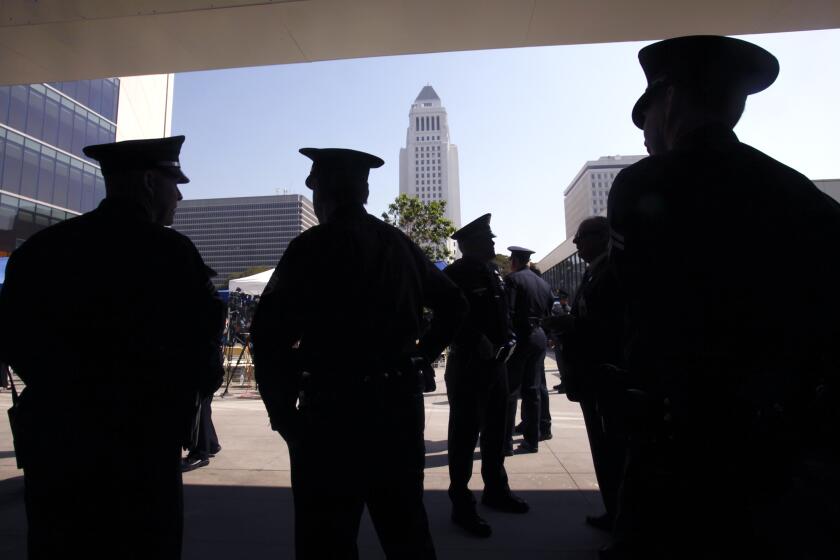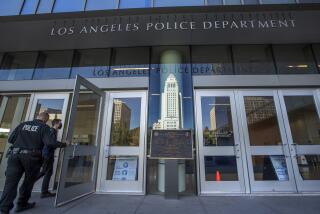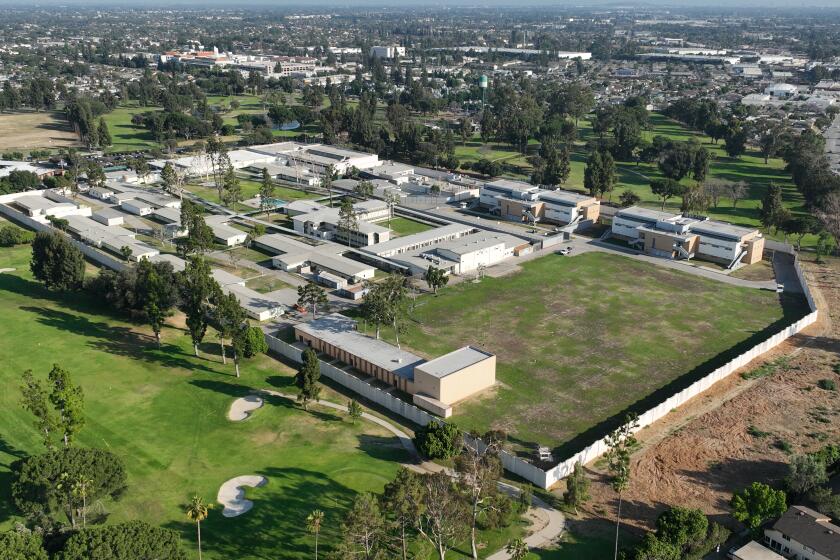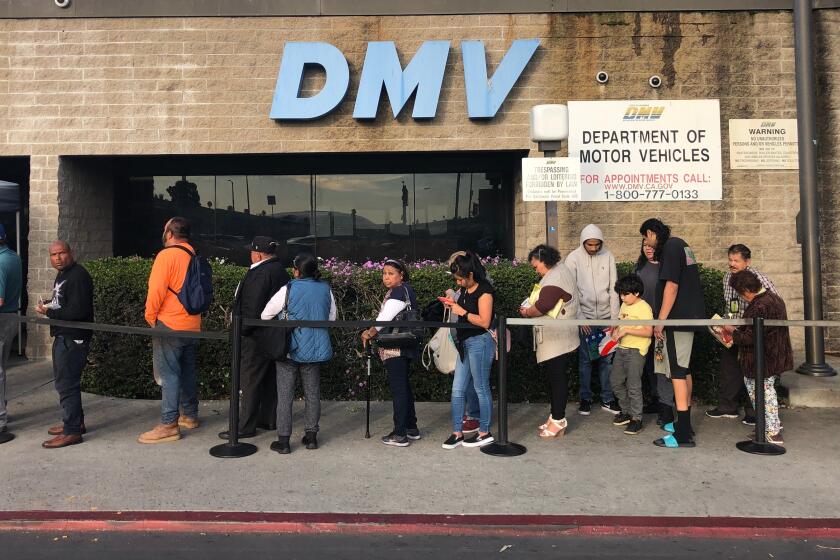LAPD tactics faulted in shooting of mentally ill K-town man — but killing ruled justified

- Share via
A Los Angeles police officer who killed a mentally ill man last year in Koreatown employed questionable tactics but was justified in using deadly force, the department’s oversight body ruled Tuesday.
The Police Commission, by a split 3-2 vote, agreed with LAPD Chief Jim McDonnell that the officer reasonably believed that his life was in danger when he fired three rounds at the man, who ignored repeated commands to drop a knife.
The slain man, 40-year-old Yong Yang, had been diagnosed as bipolar and was acting erratically inside his family’s apartment when the shooting occurred.
The officer responsible, Andres Lopez, joined the LAPD in 2017 and was involved in another on-duty shooting four years ago.
A Times analysis of police shootings over the past decade found that officers are rarely — if ever — punished for firing bullets that hit or endanger fellow cops and bystanders.
In a unanimous vote, the Police Commission, which judges whether LAPD shootings and other serious uses of force are reasonable, disapproved of Lopez’s tactics leading up to the shooting — going against a recommendation by McDonnell by ruling that Lopez’s actions violated department policy.
The panel’s decision closes an 11-month investigation into the May 2024 shooting, which drew angry denouncements from the public and ignited debate within the Korean American community about what role police should have in dealing with people in crisis.
Yang’s parents have filed a wrongful death lawsuit against the city, contending that the officers had other options available — including so-called less-lethal weapons — but failed to exhaust them before resorting to deadly force. The parents also accused the department of keeping them in the dark for hours about their son’s death.
Before Tuesday’s vote, Yang’s mother, Myung Sook Yang, pleaded with the commission to hold the officers involved accountable. Her son, she told commissioners, would have turned 41 on Monday.
“Instead of celebrating, I was grieving,” she said during the meeting’s public comment period. “He was scared, confused and needed help, so I called for mental health support for him. But instead of treating him with care, they treated him like a criminal.”
The city has denied any wrongdoing in response to the lawsuit, which remains pending.
The deadly encounter with Yang began after a Los Angeles County mental health clinician summoned police to the family’s second-story apartment in the 400 block of South Gramercy Place. The clinician, who is named as a defendant in the family’s suit, claimed Yang’s behavior became too aggressive; the family has disputed that characterization.
A complaint reviewed by The Times accuses officers of voicing open discrimination against potential recruits and colleagues based on race, sex and sexual orientation.
According to a report prepared by the LAPD chief, Lopez and his police partner were the first two officers on the scene, and body-worn camera footage released last year showed them talking with Yang’s father and explaining their options to him. One of the officers is heard telling the father that if they arrested Yang for trespassing, they wouldn’t be able to put him on a 72-hour mental health hold.
The cops tried to talk to Yang, but he had locked himself inside the apartment and refused to open the door.
Eventually, the police requested backup and called a private ambulance to transport Yang to a nearby hospital.
After some deliberation, officers decided to enter the apartment, obtaining keys from Yang’s father.
Lopez and another officer found Yang standing in the middle of the living room with a kitchen knife in his hand. He began walking toward officers, who shouted at him to drop the knife before Lopez opened fire, shooting three times in less than two seconds.
An LAPD internal review board raised the question of whether officers could have instead not entered the apartment and disengaged from the confrontation. According to the chief’s report, the officers felt they could not leave the scene because Yang was considered to be trespassing.
In an interview with investigators, Lopez said he feared for his life when he saw Yang approaching with an angry expression on his face. Lopez said his department training taught him that suspects with knives can pose a threat even when they are several feet away.
“Honestly, I didn’t want to shoot him, but I felt like if I didn’t shoot he was going to possibly cut me or cut my partner,” Lopez said. “So I felt like I had no other choice but to discharge my firearm to stop the threat.”
Yang’s death was one of several in recent years involving mentally ill people with knives, swords or other sharp objects who were shot by police.
Linda Becerra Moran, 30, had reported being held against her will in a motel room as a possible victim of sex trafficking. Police said they opened fire after she moved toward them with a knife.
An analysis of police shootings since 2018 by The Times found that LAPD officers opened fire at least 56 times on people in crisis who were holding “edged weapons” — killing 35 of them and injuring 19 others — over a five-year span.
Lopez previously shot and wounded a mentally ill man who was waving what turned out to be a replica handgun outside the Olympic Division police station in 2021.
The shootings occurred despite policies that prioritize deescalation techniques and the use of “less-lethal” alternatives, such as bean bag rounds meant to subdue people without resorting to firearms.
More to Read
Sign up for Essential California
The most important California stories and recommendations in your inbox every morning.
You may occasionally receive promotional content from the Los Angeles Times.














